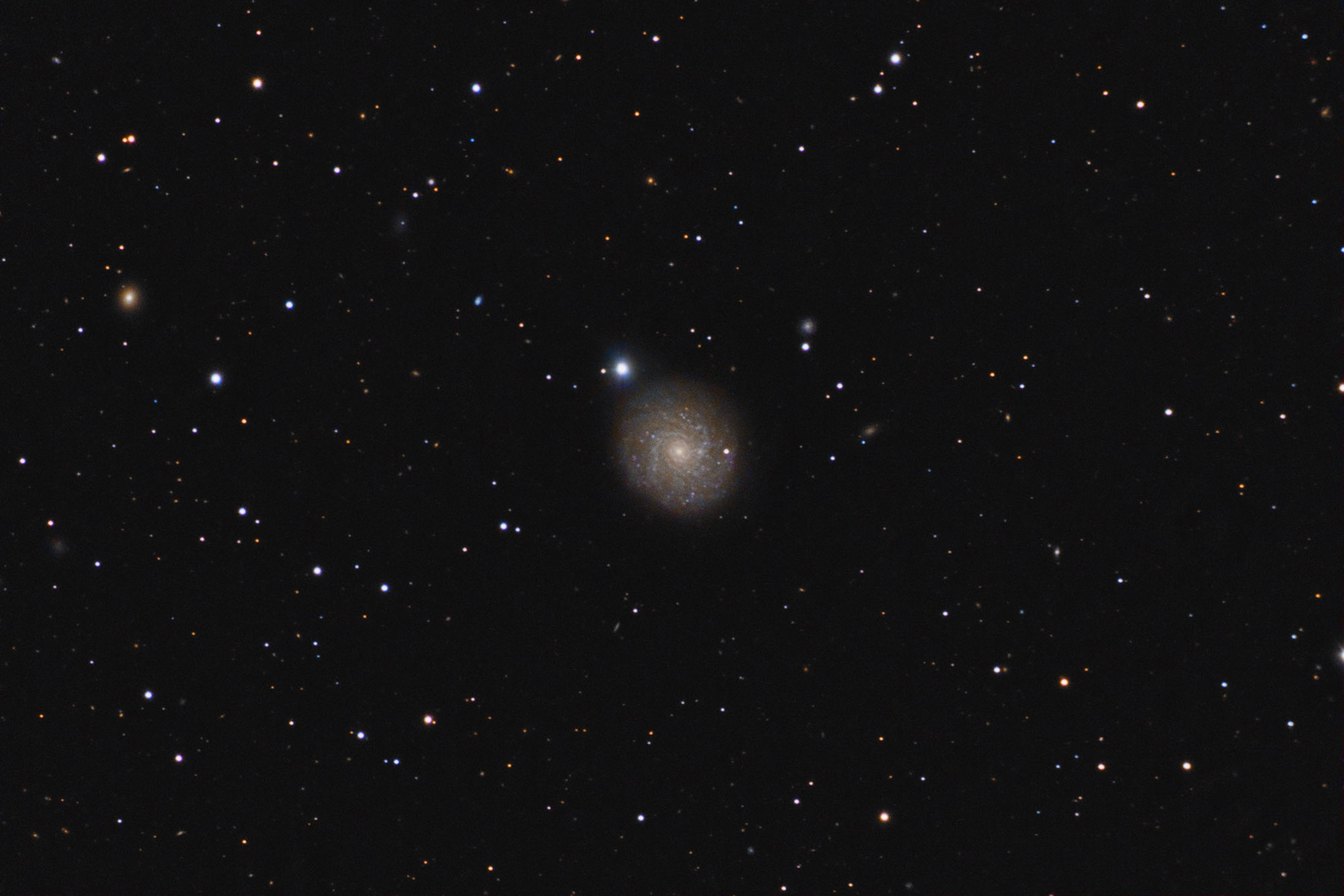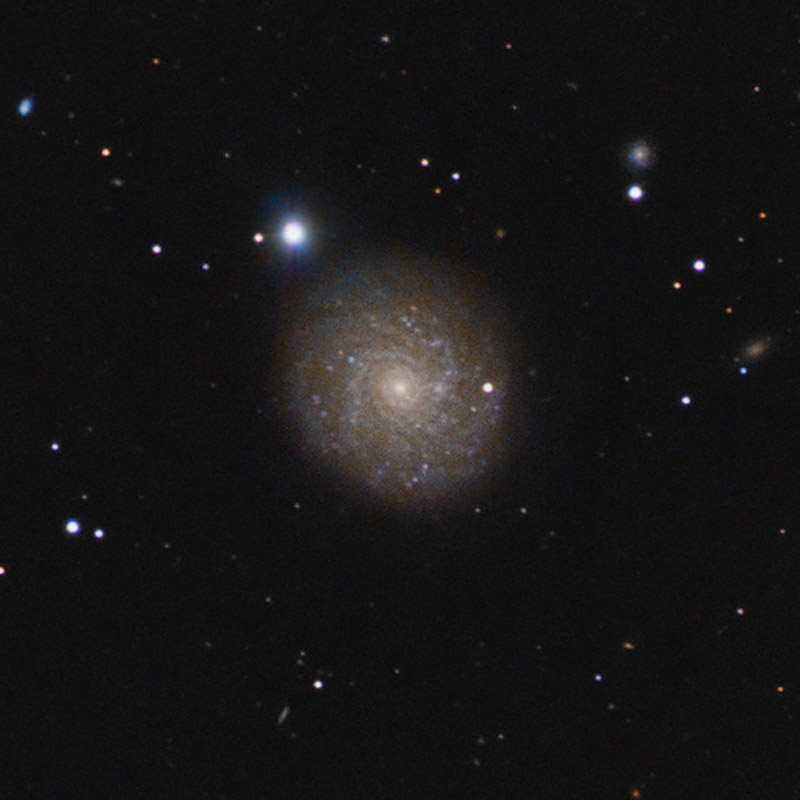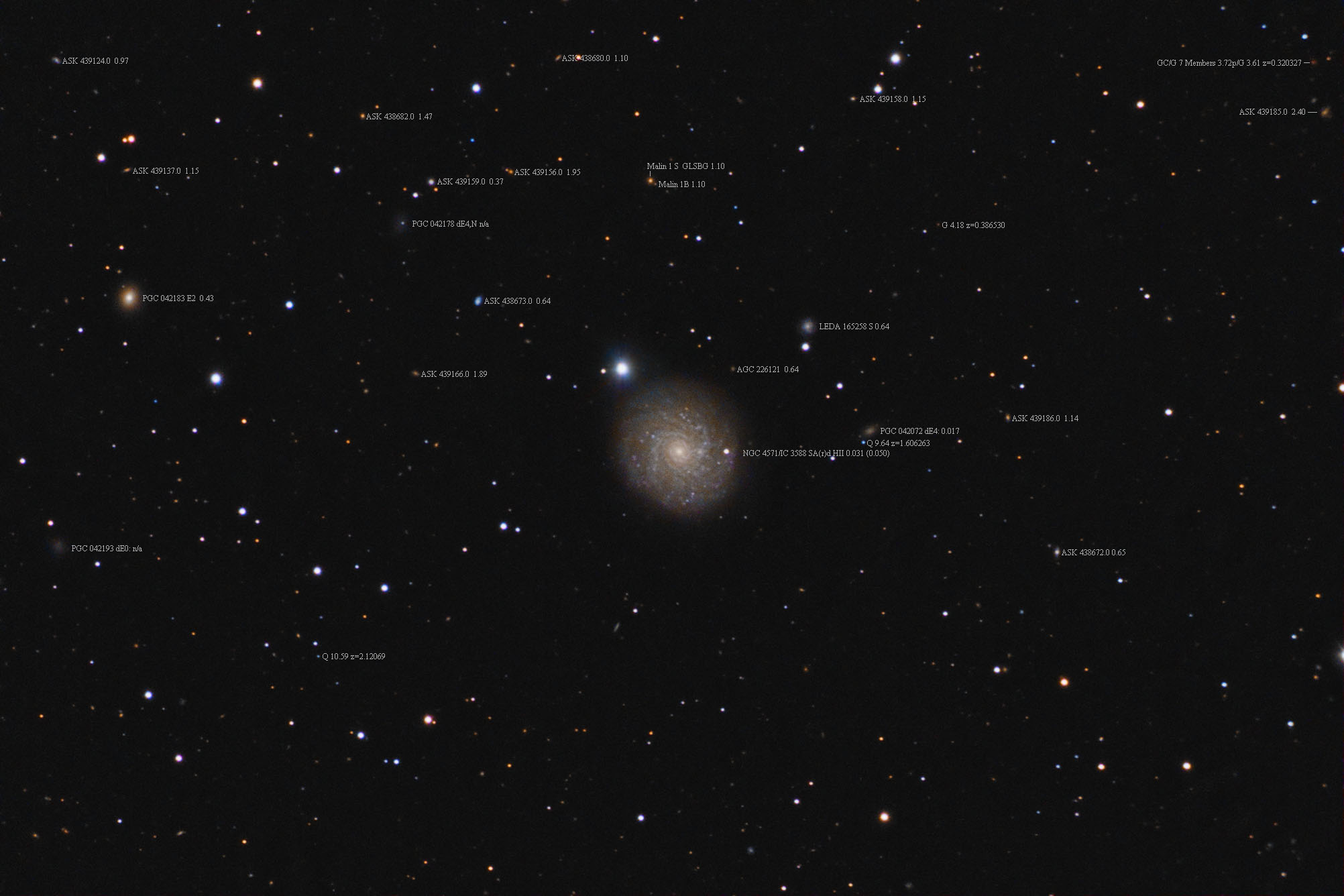| Description | Images |
Object name: NGC4571Designation(s): NGC4571, NGC 4571 is a face on low surface brightness galaxy in the Virgo Cluster a half degree southeast of M91. Thus, while a member of the Virgo Cluster it is located in southern Coma Berenices. It has low contrast blue arms on a mostly featureless reddish disk with a small rather bright core. One paper says it has an arm structure similar to M101. I really pushed the contrast and color saturation to bring out these very low contrast arms. Its distance is only 31 million light-years by redshift which is undoubtedly too close. Virgo Cluster galaxies have rather high velocities that make redshift an unreliable distance indicator. Tully-Fisher measurements show a distance of about 50 million light-years which is much more reasonable but likely still too close. I'm finding most current sources are saying about 60 million light-years for its distance which is pretty much the accepted distance to the Virgo cluster itself. Using 60 million light-years for its distance I get a size of 72,000 light-years. It was discovered by William Herschel on 4571. John Herschel thought it might be M91 which led to years of confusion before NGC 4548 was settled on as Messier's M91. On November 23, 1900, Arnold Schwassmann came across the galaxy. For reasons I haven't been able to discover Dreyer treated it as a new object giving it the designation IC 3588. Was the confusion over M91 to blame? I can't find the answer but tend to doubt it. Related Designation(s):2MASS J12365635+1413027, 2MASX J12365637+1413024, 2MASXi J1236563+141302, ALFALFA 1-372, CGCG 070-194, CGCG 1234.4+1429, EVCC 0952, FAUST 3286, HDCE 0720 NED172, HIPASS J1236+14, IC 3588, IRAS 12344+1429, IRAS F12344+1429, LDCE 0904 NED203, MCG +02-32-156, NGC 4571, NGC4571, NSA 162123, PGC 042100, SDSS J123656.37+141302.4, UGC 07788, USGC U490 NED87, UZC J123656.5+141302, VCC 1696, VPC 1088, [M98j] 174 NED174, [RG2008] J189.23492+14.21735 , |


